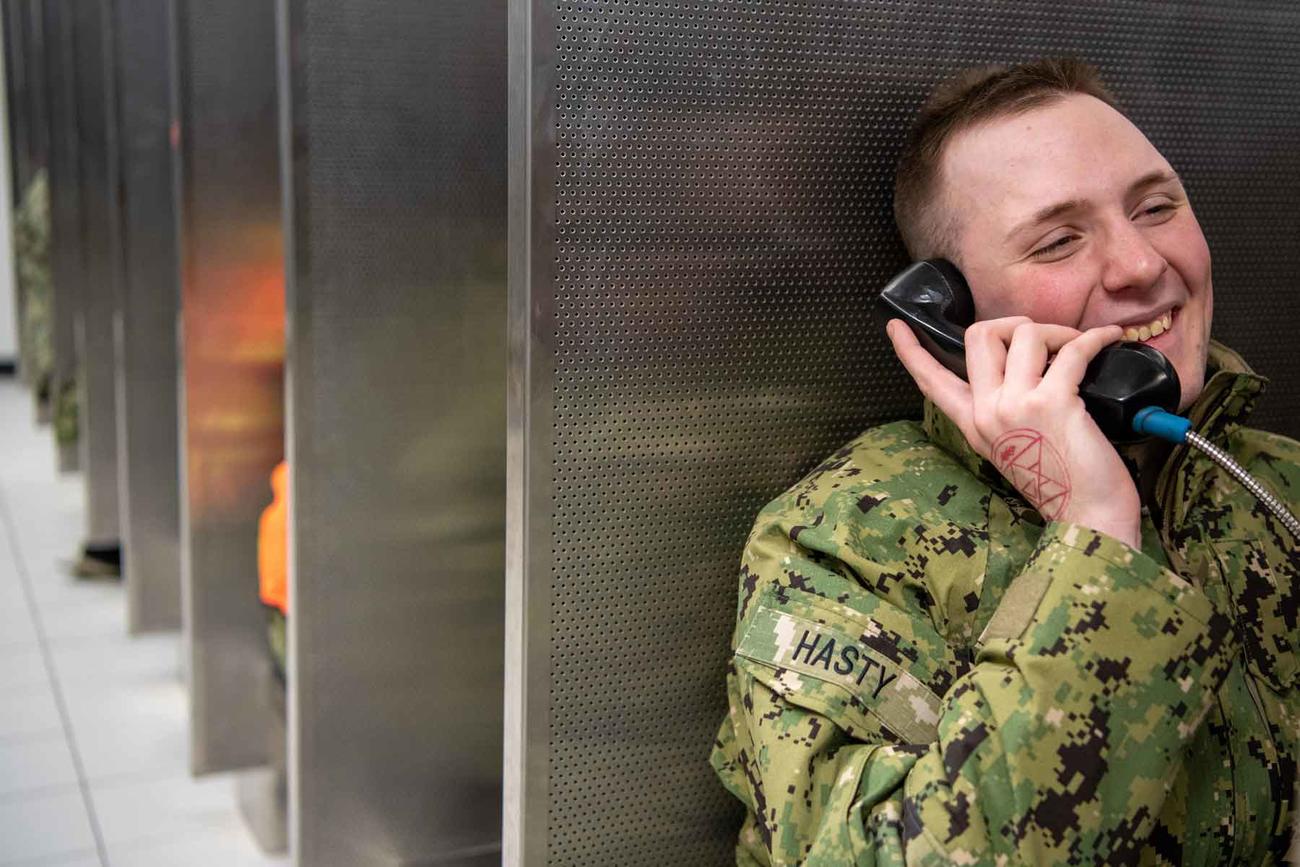
The Navy‘s boot camp at Great Lakes, Illinois, says it will start letting recruits have some access to cell phones while they are in training.
“Over the next few weeks,” recruits in two divisions — units of roughly 60 to 80 sailors — “will have limited access to their cell phones during designated periods of training in order to connect with family and friends and manage personal matters,” the Navy announced in a Facebook post Tuesday.
Beyond the announcement, the service offered few details about the policy change that promises to be a major shift in recruits’ experience at boot camp and one that is already proving controversial among outside observers.
Read Next: Cavalry Soldiers at Fort Carson Can’t See Doctors in the Early Morning Under New Rules
Typically, Navy recruits have had little access to the outside world or their personal phones while undergoing the difficult early days of training to be a sailor. Instead, recruits still make use of a large room filled with pay phones several times during their 10-week stay at Great Lakes.
The Navy’s boot camp website even recommends recruits pack prepaid phone cards to simplify the pay phone process.
However, the service’s initial training is one of the last entry-level programs to strictly enforce such a firm stand on cell phones. By contrast, the Army allows its recruits some access to phones — usually in limited time windows or as a reward — but they don’t carry them at all times.
A 2016 memo on the Air Force basic training website says that its recruits are allowed to use cell phones or pay phones “to make outgoing calls to family members,” and they are even “encouraged to maintain their cell phone service” while at basic training. The memo does note that “trainees will use cell phones only under direct supervision of a staff member” and access is “based on their performance.”
Military.com reached out to the Navy for clarification on what its current rules on cell phones are, as well as more details about how the new policy will play out for the two experimental divisions, but did not receive a response in time for publication.
However, on the boot camp’s Facebook page, the most popular comments disagreed with or dismissed the need for the policy.
“I was better off without the constant phone interaction,” one former sailor wrote.
“This is a terrible idea,” another commenter, whose profile had pictures of him in a Navy chief petty officer uniform, wrote before noting that the point of basic training is “to harden young men and women to defend our country, to break them of old habits and toughen them up for the job ahead.”
Meanwhile, the Navy’s social media post said that the service’s intent “is to expand this same opportunity to all Recruit Divisions over time,” and the service promised a Frequently Asked Questions page “in the near future to answer questions.”
While the motivation behind this change is not clear from the post, the move comes at a time when the service is not only struggling to make recruiting numbers but is also making changes to existing policies to help recruits in the door and into uniform.
Aside from offering historically high bonuses just to ship out to basic training quickly, the Navy also duplicated an Army program that takes would-be recruits who don’t quite meet standards and gives them additional training in physical fitness and academic skills ahead of shipping them off to boot camp.
Some of its efforts were more controversial, however. An effort to increase the working hours of its recruiters to six days a week and to at least consider implementing measures to extend recruiters’ assignments up to a year received swift backlash and a reversal after only a week.
The Navy managed to recruit 30,236 active-duty enlisted sailors — 7,464 short of its goal of 37,700 — this past fiscal year.
— Konstantin Toropin can be reached at konstantin.toropin@military.com. Follow him on X at @ktoropin.









